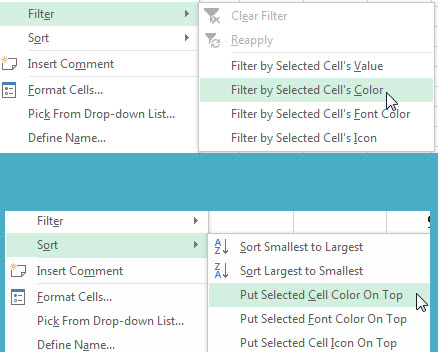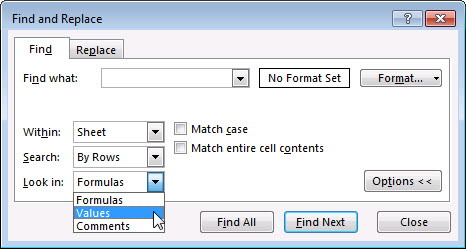My consulting work recently highlighted a stark contrast in different Excel models and the effort it takes to create or change them. I make some recommendations to make things easier for yourself at the end of this post.
Monthly Archives: May 2017
The secret of joy in work is contained in one word – excellence. To know how to do something well is to enjoy it.
Pearl S. Buck (1892 – 1972)
Top 5 Books
A recent email from CPA Australia listed my Excel book (Advanced Excel Reporting for Management Accountants) in the top 5 of all books – see list below.
Members of CPA Australia can access electronic books for FREE via ProQuest – links are below.
You will need to log in to the CPA Australia site to be able to access them.
The accounting books CPAs loveWhich books have your fellow accountants found most helpful in advancing their careers? You may find the results surprising, with their top five covering everything from Excel and analytics to forecasting and getting your own way. Try these ebooks for yourself. Your Excel survival kit: Your guide to surviving and thriving in an Excel world |
| Killer analytics: Top 20 metrics missing from your balance sheet |
| Persuasion equation: The subtle science of getting your way |
| Advanced Excel reporting for management accountants |
| Financial forecasting, analysis and modelling: A framework for long-term forecasting |
Range Selection Tip and Trick
You know how when you press Enter you usually select the cell below? You can override that without changing a single setting.
When you select a range Excel can behave differently when you press the Enter key. Not many users know this trick.
Select the range B2:G2 in a blank sheet and press Enter. The cell selected will be the one on the right or back at the start of the range depending which cell was active when the range was selected.
Pressing Enter cycles through all the cells in the range.
This works for two dimensional ranges as well – in that case the cell below is selected until the bottom of the range is reached then the top of the next column within the range is selected.
This is handy for entering data into input ranges.
Try This
Let’s say range A2:D2 has basic links referencing the cell above so cell A2 has =A1 in it.
What if you wanted to change all those relative references to fixed references?
Select the range A2:D2 and then press these three keys in sequence
F2 F4 Enter
Repeat three times – job done!
F2 is the Edit command.
F4 converts a relative reference into a fixed reference.
Enter accepts the change.
You can often achieve very fast changes with keyboard techniques like this.
For example if a cell contains an email address or a web address but it isn’t recognised as a link, simply select the cell and press F2 then press Enter to convert it into a link.
If there is a column of them, just keeping pressing F2 and Enter to convert them all. You can become quite fast.
Excel Subtotal Sort Magic
Sorting by subtotals is possible
Sometimes Excel surprises me. In this case it sorts in a way I didn’t expect, but in a good way. Thanks to Mr Excel for the tip.
Only those who dare to fail greatly can ever achieve greatly.
Robert F. Kennedy (1925 – 1968)
Marking cells Good-Bad-Neutral
Sometimes when you are reviewing a file against a printed report, you may need to identify when cell values are correct, wrong or close.
Consider using the built-in Styles Good/Bad/Neutral on the Home ribbon tab – see below.

Remember they may not be useful for colour blind readers if you are sharing with other people.
Don’t forget once applied if you want to apply the same format to another cell press the F4 function key.
Once formatted you can sort or filter by colour – see right click options below.
Count Sundays between two dates
SUMPRODUCT shows it flexibility
We’ve all heard the term “A month of Sundays” to describe a long time. Well what if you wanted to count how many Sundays between two dates?
Adding Values to Values
Let’s say you have an input cell that someone enters multiple values into eg
=10+5+34
You may have many such cells.
Now let’s say you want to add 20 to all these cells but keep the original values that have been entered in those cells.
Paste Special to the rescue.
- Enter 20 in a blank cell and then copy the cell
- Select the cells you want to amend – you can hold the Ctrl key down to select multiple cells with the mouse
- Open the Paste Special dialog
- Click the options Values and Add – as per image below – then click OK – done!
The resulting formula will be something like
=(10+5+34)+20
Getting Date Headings Right
Formulas rule
If you are using date-based headings in your reporting models please consider using dates in the headings rather than text. I’ll explain why.
Find and Replace Tips, Tricks and Traps
The keyboard short for Find is Ctrl + f.
For Find & Replace it is Ctrl + h.
Tips
Always, I mean ALWAYS, select the range you are working with before you run Find and Replace.
If you have a single cell selected it will affect the whole sheet – maybe not what you want.
Leave the Dialog Open
In the old days we used to close the Find dialog. Now you can leave it open if you need to change things in multiple files or sheets. You can navigate around with the dialog left open.
When using Find if you want to select all the cells it has found, click in the bottom section of the Find dialog where the cells are listed and press Ctrl + a this will select all the cells at once.
Number Formats
Be aware that sometimes numbers won’t be found due to formatting. eg if you search for 1000 but you have used the comma format eg 1,000 then the number might not be found.
You might need to do two Finds, with and without commas.
Formulas vs Values
Click on the Options button to see these options.
The default Look in: setting for Find (unfortunately) is Formulas. See image below.
This means if a formula returns what you are looking for it won’t be found. You need to switch this Look in: setting to Values.
Do You Have Excel Inquire?
Its a built-in audit add-in
Inquire is a new add-in in some versions of Excel 2013 and later versions It is an auditing Add-in that can analyse and report on your Excel files.




